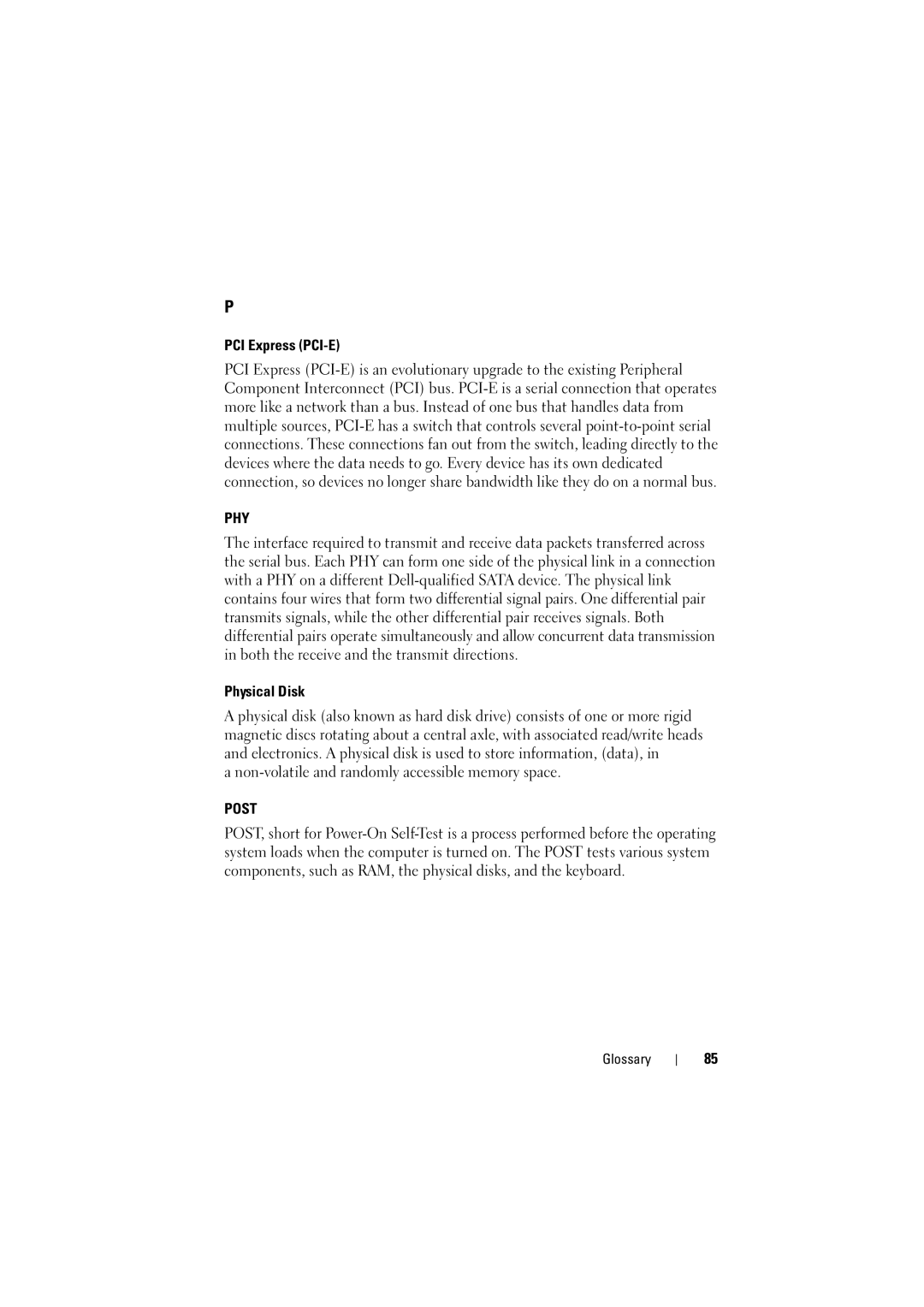
P
PCI Express (PCI-E)
PCI Express (PCI-E) is an evolutionary upgrade to the existing Peripheral Component Interconnect (PCI) bus. PCI-E is a serial connection that operates more like a network than a bus. Instead of one bus that handles data from multiple sources, PCI-E has a switch that controls several point-to-point serial connections. These connections fan out from the switch, leading directly to the devices where the data needs to go. Every device has its own dedicated connection, so devices no longer share bandwidth like they do on a normal bus.
PHY
The interface required to transmit and receive data packets transferred across the serial bus. Each PHY can form one side of the physical link in a connection with a PHY on a different Dell-qualified SATA device. The physical link contains four wires that form two differential signal pairs. One differential pair transmits signals, while the other differential pair receives signals. Both differential pairs operate simultaneously and allow concurrent data transmission in both the receive and the transmit directions.
Physical Disk
A physical disk (also known as hard disk drive) consists of one or more rigid magnetic discs rotating about a central axle, with associated read/write heads and electronics. A physical disk is used to store information, (data), in
a non-volatile and randomly accessible memory space.
POST
POST, short for Power-On Self-Test is a process performed before the operating system loads when the computer is turned on. The POST tests various system components, such as RAM, the physical disks, and the keyboard.
